In the heart of Valencia, the thick walls of the Cathedral of Valencia enclose not only relics and secrets, but also a deep devotion and traditions that are intertwined with an unparalleled cultural and architectural value. Next to it, stands the emblematic gothic tower El Miguelete, a symbol of the city.
Today we invite you to a journey through the history, architecture and beliefs that come to life in the Cathedral, El Miguelete and the Holy Chalice.



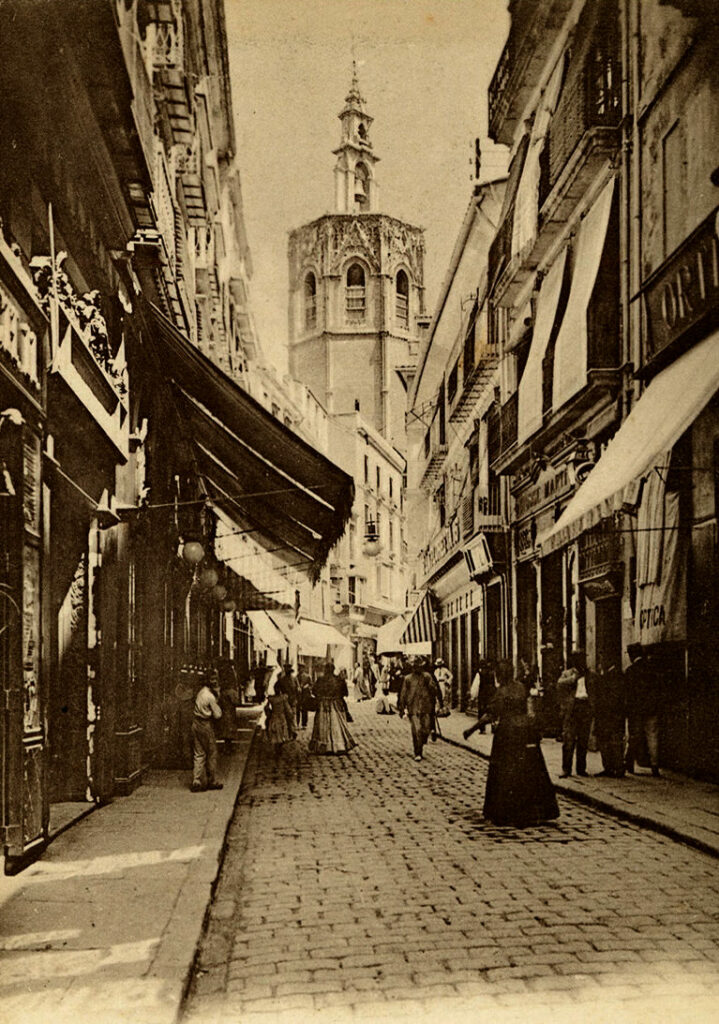
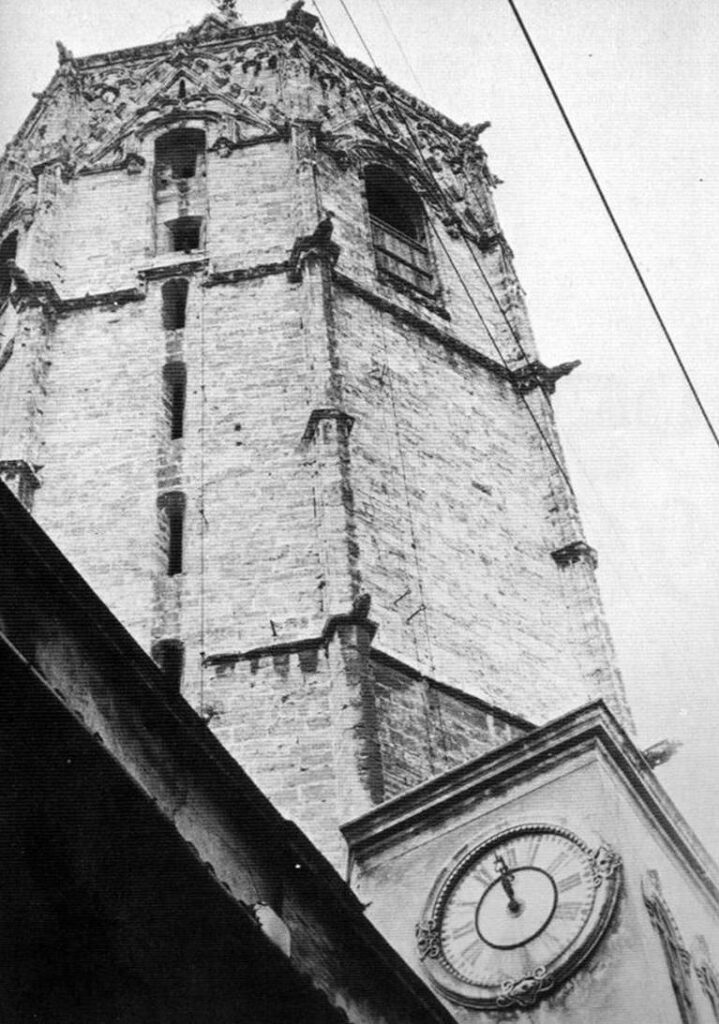
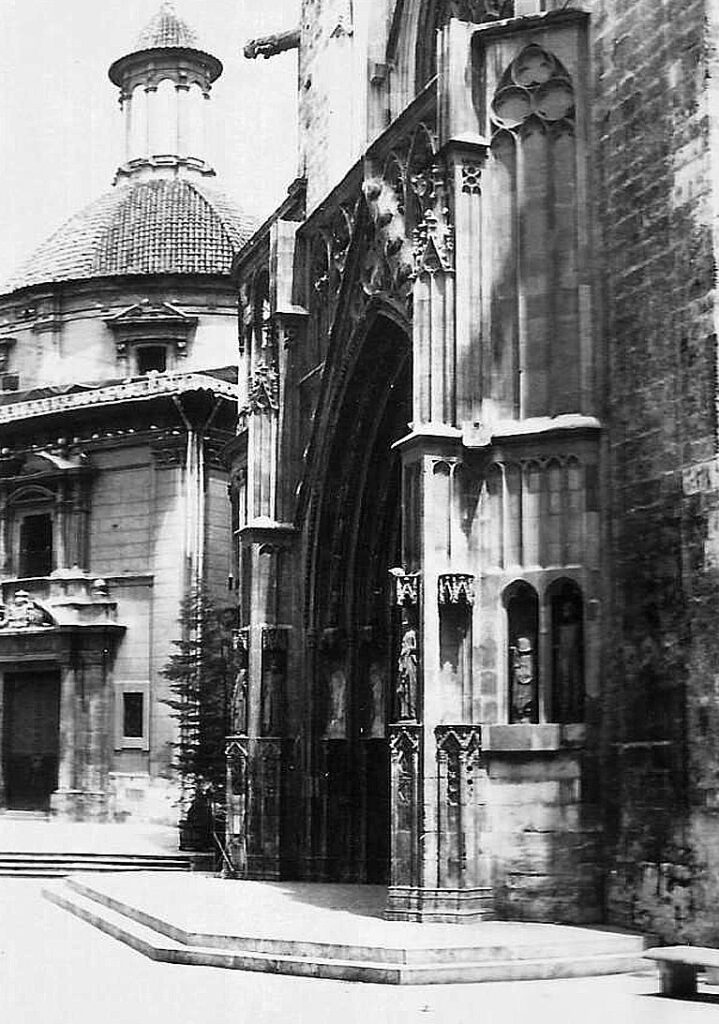
The Cathedral of Valencia or the Cathedral of the Holy Chalice
This imposing structure is not only a place of worship; it is a time capsule that shows the layers of Valencia’s history. Originally a temple dedicated to Jupiter in Roman times, the site evolved over the centuries: first to a Christian church in the 6th century, then transformed into a mosque under Muslim rule.
With the conquest of Valencia by King James I in 1238, the Aljama Mosque gave way to the current Valencia Cathedral. Curiously, the construction of the Cathedral, as we know it today, did not begin until 24 years after the conquest, extending over four centuries.
Its official name, Iglesia Catedral Basílica Metropolitana de la Asunción de Nuestra Señora Santa María de Valencia, reflects its significance and relevance. Today, the Cathedral has a Latin cross plan, with a central nave of 22 meters high and side aisles that reach almost 16 meters.
In 1459, the Cathedral was expanded to include the majestic bell tower El Miguelete and the chapel that houses the Holy Chalice, creating an even grander complex.
The Fascinating Exterior of the Valencia Cathedral
The Cathedral of Valencia, an architectural collage through time, harmoniously fuses elements of the Romanesque, Baroque and Gothic styles, the latter being the most prominent. Let’s explore some of its highlights:
The Main Gate or Iron Gate

Known as the most recent entrance to the Cathedral, the Main Door was built between 1703 and 1741.
Of French Gothic style, it was built between the XIII – XIV centuries and, although it is unknown who was its author, it is known that in 1354 it was already finished, and it could be attributed to Nicolás Ancona, master builder of the Cathedral at that time.
This portal, a baroque masterpiece, is framed by an impressive three-story facade:
- In the first body, just above the portal, there are elegant figures of angels in honor of the Virgin. On each side of the door, there are niches with life-size statues of Saint Thomas of Villanova and Saint Peter Paschal.
- The second body is adorned with a striking oval rose window, accompanied by glasswork and several sculptures.
- In the third body, two large stone angels worship a cross placed on a bronze sphere, forming a spectacular finial.
This gate is also known as the Iron Gate, due to the iron bars that guard the entrance.
Almonia Door or Palau Door

The Palau Gate, so called because of its proximity to the Bishop’s Palace, is a Romanesque entrance built in the 13th century. It is the oldest entrance of the cathedral, being of Romanesque style and differing from the rest of the predominantly Gothic architectural style. It has twelve columns, six on each side, whose capitals have sculpted figures depicting biblical scenes.
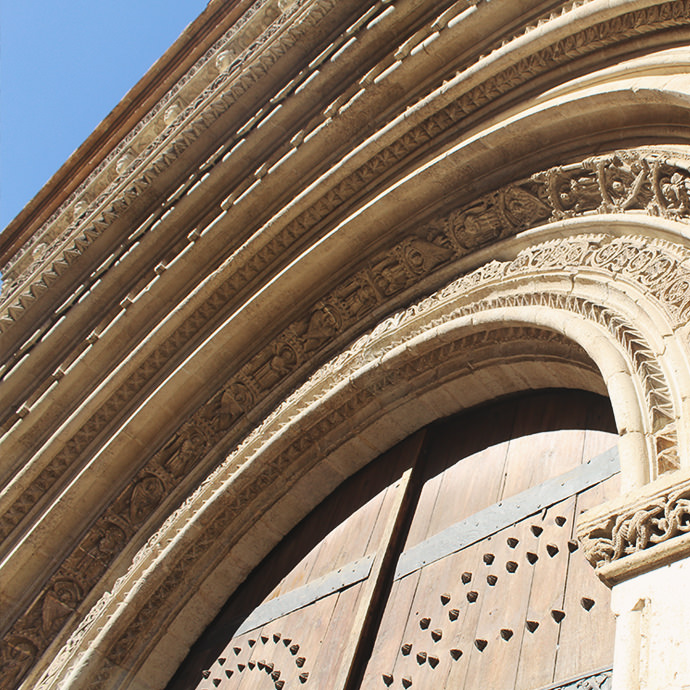
Above the arches of the portal, there is a series of corbels with 14 human heads carved in stone, arranged in pairs. These heads are surrounded by legends: one tells that they represent the seven married couples who brought 300 maidens to Valencia to marry the first Christians of the city, while other narratives suggest that they are the benefactors of the construction of the portal. These heads, shrouded in mystery, continue to welcome visitors to the cathedral.
Each element of the exterior of the Cathedral of Valencia is not only a testimony of the architectural evolution, but also a reflection of the rich history and legends of the city.
Gothic or “apostles'” gate

The Door of the Apostles of the Cathedral of Valencia owes its name to the twelve apostles sculpted on its façade. Located in front of the Plaza de la Virgen, this door is characterized by its four pointed arches that join harmoniously, forming a triple archivolt. In its intercolumniations, forty-eight reliefs representing virgins, angels and blessed can be admired, creating a visual spectacle of faith and art.
This work, a clear example of the French Gothic style, was built between the 13th and 14th centuries. Although the author of the door remains a mystery, it is believed that by the year 1354 it was already completed, possibly under the direction of Nicolás Ancona, master builder of the Cathedral at that time.

The Water Tribunal
A historical and cultural curiosity takes place at the foot of this gate: every Thursday at 12 noon, the Tribunal de las Aguas, an ancient institution that decides on the use of water in the Valencian orchard, meets. This unique tradition attracts both locals and visitors interested in Valencian history and culture.
The Miguelete: A Historical and Cultural Symbol in Valencia
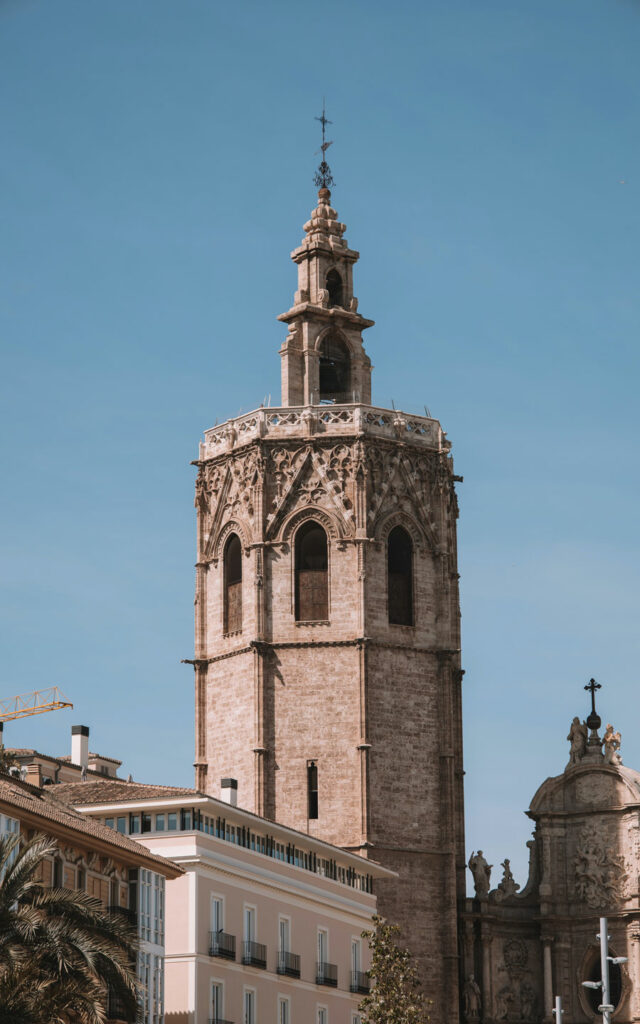
Right next to the main entrance of the Cathedral of Valencia stands the impressive Miguelete Tower (or Micalet), whose construction lasted from 1381 to 1425. This tower is much more than a simple monument; it is a symbol of Valencian pride and identity.
Over the centuries, El Miguelete has been a favorite place to announce and celebrate significant events in Valencia, including canonizations, royal coronations, patron saint festivities and military victories.
The name “El Miguelete” comes from a special blessing made in honor of St. Michael, on September 29, 1418, coinciding with the date of the saint. The tower, with its more than 50 meters high and octagonal shape, is a living testimony of Valencian history.
The Secrets of El Miguelete
The Miguelete is composed of four levels, and its upper part is the only one adorned with decorative elements such as moldings and pointed arches. The structure of the tower, built with ashlars, reflects the passage of time in its color and texture.
Climbing El Miguelete is an experience in itself. A 207-step spiral staircase awaits you, taking you through different levels, each with its own story:
- The First Level: Formerly a refuge for those seeking asylum from justice.
- The Second Level: A small room where the sacristans resided.
- The Third Level: The Sala de Campanes, home to 11 historic bells, each dedicated to a saint. Among them, the following stand out:
- La María, the largest.
- La Catalina, famous for its resistance.
- La Bárbara, the only one with a computer-controlled engine.
A curious fact is that, in the 16th century, Queen Doña Juana, known as “La Loca”, enjoyed the sound of all the bells ringing simultaneously, an experience both fascinating and overwhelming.
Today, the complete ringing of the bells occurs only once a year, on Corpus Christi at 12:00 noon.
The Terrace of El Miguelete
When you reach the top, you will find a terrace decorated in gothic style. Here, there is a pavilion that houses:
- The Micalet, a bell that marks the hours of the day.
- La Campana dels Quarts, which announces the quarter hours during the day and the half hours at night.
From here, you will enjoy a spectacular panoramic view of Valencia, a sight that has captivated both locals and visitors from all over the world.
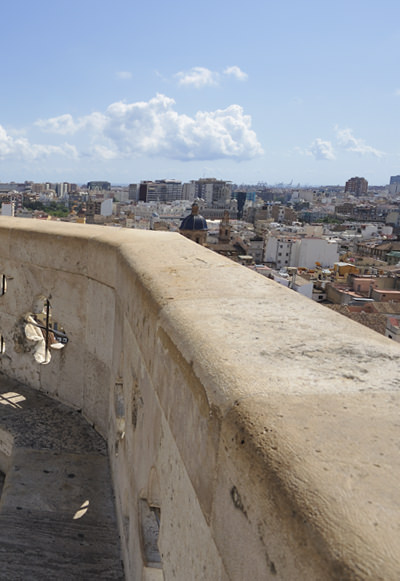
Exploring the Interior of the Valencia Cathedral
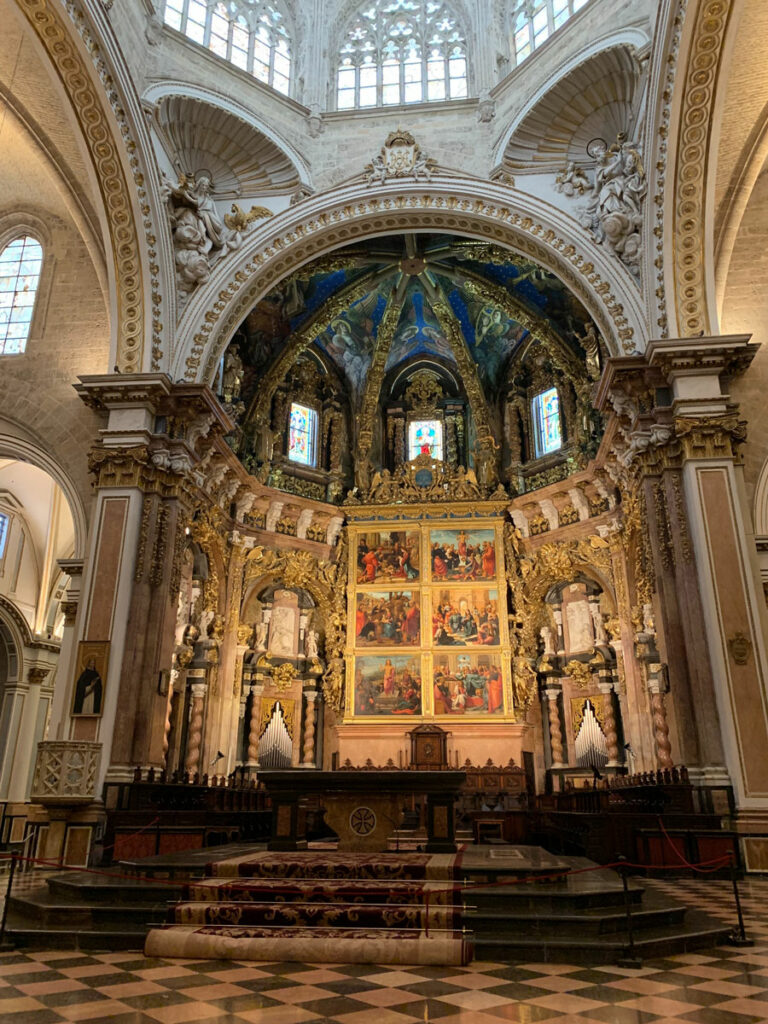
When you enter the Cathedral of Valencia, the first thing that will catch your attention will be the three naves of the main body. As you approach the main altar, you will be fascinated by the exuberant baroque decoration, a display of contrasting colors, gold and marble, complemented by images of angels that adorn the space.
Head then to the Cimborrio, and as you look up, you will discover an impressive hexagonal prism rising more than 40 meters, adorned with translucent alabaster windows that bathe the interior in natural light.
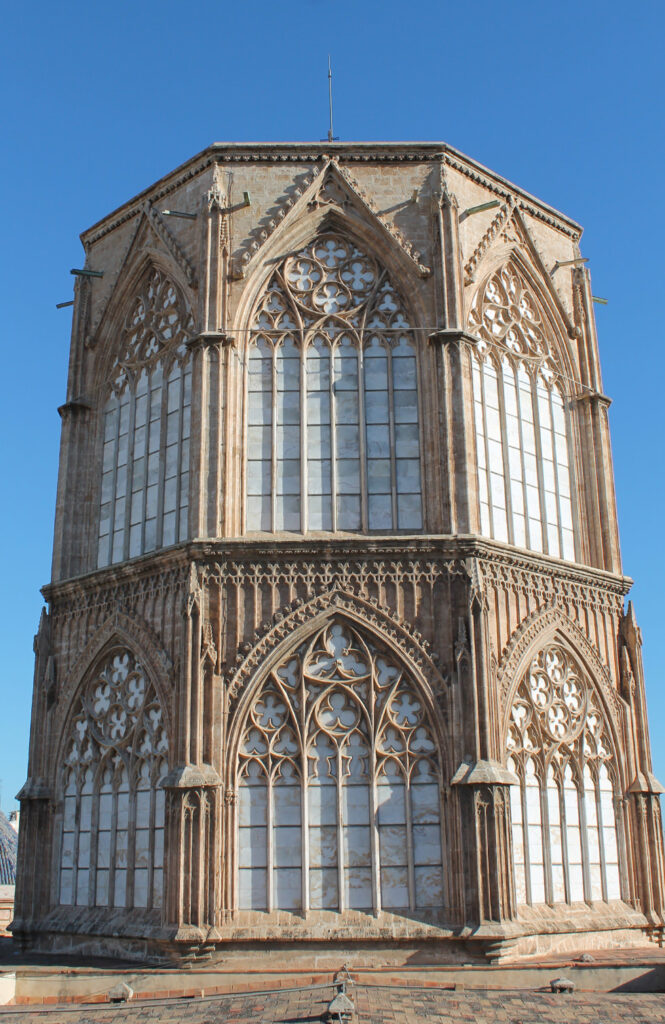
Throughout the nave and in the ambulatory (behind the High Altar), 24 chapels are distributed, each with its own history and distinctive art. Among them, the following stand out:
- Chapel of San Francisco de Borja: Here you will find an oil painting by Mariano Salvador Maella, which portrays San Francisco de Borja before the corpse of his wife, Empress Isabella, a crucial moment in his spiritual calling.
- Chapel of the Resurrection: It houses one of the most venerated relics of the cathedral, the incorrupt arm of St. Vincent Martyr, tortured during the Roman Empire.
The Holy Chalice: A Relic of Inestimable Value

Inside the Cathedral, to the right of the main entrance, is the Chapel of the Holy Chalice. Inside this chapel, protected by glass, is the famous relic that, according to tradition, Jesus used at the Last Supper. This agate cup, 3 mm thick, dates from the 1st century A.D. according to archaeological research.
The history of this chalice is fascinating. Historical documents suggest that it was taken to Rome by St. Peter and guarded by the Popes over the centuries. In the 3rd century, it was moved to Valencia for protection.
Those who have examined the chalice describe an almost magical effect: under the light, it appears to burn like a torch, a phenomenon that has captivated believers and the curious alike. The presence of this cup in Valencia adds an aura of mystery and devotion to the already impressive cathedral.
Discovering the Underground Secrets of the Valencia Cathedral
Beneath the surface of the Valencia Cathedral, about three meters deep, hides a fascinating world of archaeological remains dating back to the Roman to medieval times. Here you can find from pavements of boulders of the third century, vestiges of Roman houses with drainage systems of the second century, to a well of the eighteenth century and the old parish cemetery of San Pedro of the thirteenth century. Some human remains even rest in this historic site. This window to the past can be explored in the tenth room of the Cathedral’s basement, accessible through the Church Museum.
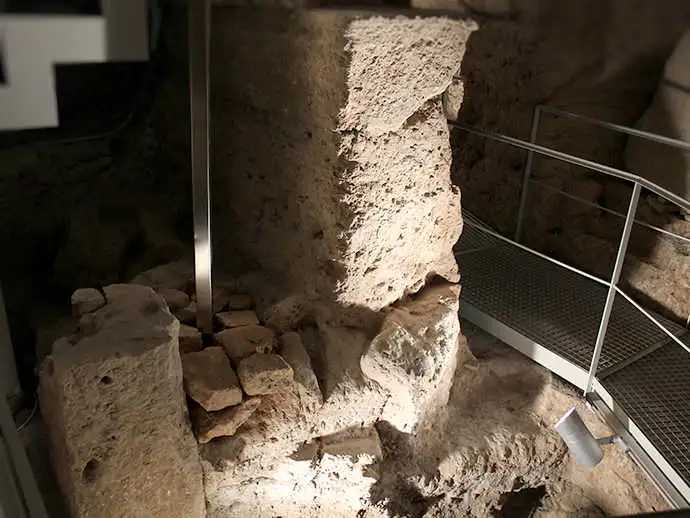

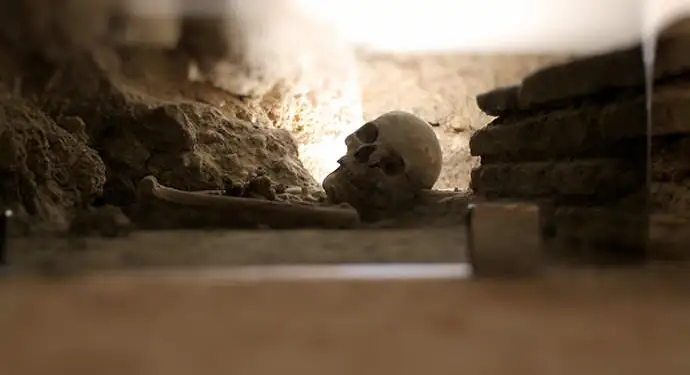
The Song of the Sibyl: A Living Tradition
One of the oldest and most evocative traditions in Valencia is “The Chant of the Sibyl in the Cathedral of Valencia”, which is celebrated a few days before Christmas. This ceremony includes the participation of musicians, choirs and soloists who perform medieval chants with instruments that are replicas of those seen in the frescoes of the High Altar.
The Song of the Sibyl is a deeply religious musical and theatrical performance that announces the birth of Jesus. This tradition, established by King James I in the 13th century, is still a moving and revered event today.


